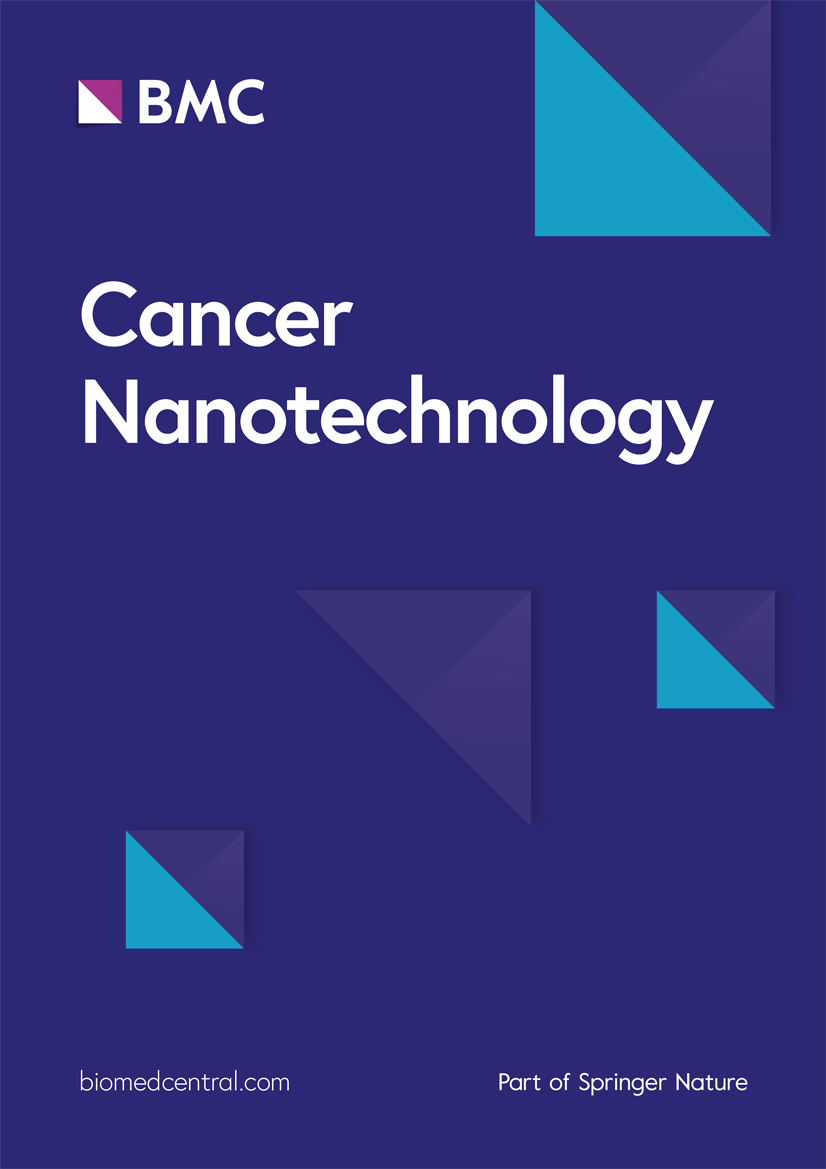Anticancer platinum-drug delivered by mesenchymal stromal cells improves its activity on glioblastoma
IF 4.8
2区 工程技术
Q2 NANOSCIENCE & NANOTECHNOLOGY
引用次数: 0
Abstract
Glioblastoma multiforme (GBM) is nowadays the most aggressive tumor affecting brain in adults with a very poor prognosis due to the limited therapies and the systemic cytotoxicity. Among the different new drugs, recently has been reported the in vitro anti-glioma activity of a new cationic platinum(II) complex bearing 8-aminoquinoline as chelating ligand (Pt-8AQ). The purpose of this research work was to confirm the activity of Pt-8AQ on U87-GM spheroid and to investigate the ability of Mesenchymal Stromal Cells (MSCs) to incorporate and release Pt-8AQ in its active form. The MSCs were primed with Pt-8AQ under optimized conditions and the secretome was analyzed for evaluating the cytotoxic activity of Pt-8AQ and the presence of Extracellular Vesicles (Evs). The principal results showed that Pt-8AQ incorporated by MSCs was released in the secretome and exerted a significant higher anticancer activity with respect to the free drug. The release of Pt-8AQ did not occur in Evs, as demonstrated for other drugs, but it could be delivered bound to some specific carriers able to enhance its bioavailability and efficacy. Some hypotheses are discussed to explain this surprisingly finding out that, however, it needs more investigations. The major conclusions are that cell mediated drug delivery systems could provide a potential approach to facilitate the GBM therapy by intra-tumoral administration of cells loaded with Pt-8AQ, being MSCs able to integrate it into the tumor mass and exert high therapeutic efficacy in situ. The increased efficacy of Pt-8AQ delivered by MSCs even suggests to deeper investigate a possible direct use of MSCs secretome both in situ and/or by systemic administration, being secretome able to pass the blood–brain tumor.间充质基质细胞递送的抗癌铂类药物提高了对胶质母细胞瘤的活性
多形性胶质母细胞瘤(GBM)是目前影响成人脑部的最具侵袭性的肿瘤,由于治疗方法有限且具有全身细胞毒性,预后极差。在各种新药中,最近有报道称一种以 8-氨基喹啉为螯合配体的新型阳离子铂(II)复合物(Pt-8AQ)具有体外抗胶质瘤活性。这项研究工作的目的是确认 Pt-8AQ 对 U87-GM 球蛋白的活性,并研究间充质基质细胞(MSCs)结合和释放活性形式的 Pt-8AQ 的能力。在优化条件下用 Pt-8AQ 诱导间充质干细胞,并分析其分泌物组,以评估 Pt-8AQ 的细胞毒性活性和细胞外囊泡 (Evs) 的存在。主要结果表明,间充质干细胞结合的 Pt-8AQ 在分泌组中释放,其抗癌活性明显高于游离药物。与其他药物一样,Pt-8AQ 并不在 Evs 中释放,但它可以与某些特定载体结合,从而提高其生物利用度和药效。研究人员讨论了一些假设来解释这一令人惊讶的发现,但这还需要更多的研究。得出的主要结论是,细胞介导的给药系统可以提供一种潜在的方法,通过在肿瘤内给药装载有 Pt-8AQ 的细胞来促进 GBM 的治疗,因为间充质干细胞能够将 Pt-8AQ 整合到肿瘤组织中,并在原位发挥高疗效。间充质干细胞递送 Pt-8AQ 的疗效提高甚至表明,由于间充质干细胞分泌物能够通过血脑屏障,因此有可能在原位和/或通过全身给药直接使用间充质干细胞分泌物。
本文章由计算机程序翻译,如有差异,请以英文原文为准。
求助全文
约1分钟内获得全文
求助全文
来源期刊

Cancer Nanotechnology
Pharmacology, Toxicology and Pharmaceutics-Pharmaceutical Science
CiteScore
5.20
自引率
1.80%
发文量
37
审稿时长
15 weeks
期刊介绍:
Aim:
Recognizing cancer as a group of diseases caused by nanostructural problems (i.e. with DNA) and also that there are unique benefits to approaches inherently involving nanoscale structures and processes to treat the disease, the journal Cancer Nanotechnology aims to disseminate cutting edge research; to promote emerging trends in the use of nanostructures and the induction of nanoscale processes for the prevention, diagnosis, treatment of cancer; and to cover related ancillary areas.
Scope:
Articles describing original research in the use of nanostructures and the induction of nanoscale processes for the prevention, diagnosis and treatment of cancer (open submission process). Review, editorial and tutorial articles picking up on subthemes of emerging importance where nanostructures and the induction of nanoscale processes are used for the prevention, diagnosis and treatment of cancer.
 求助内容:
求助内容: 应助结果提醒方式:
应助结果提醒方式:


